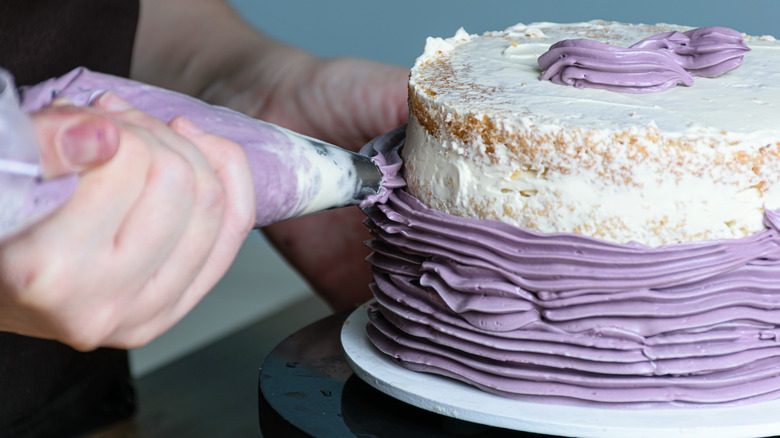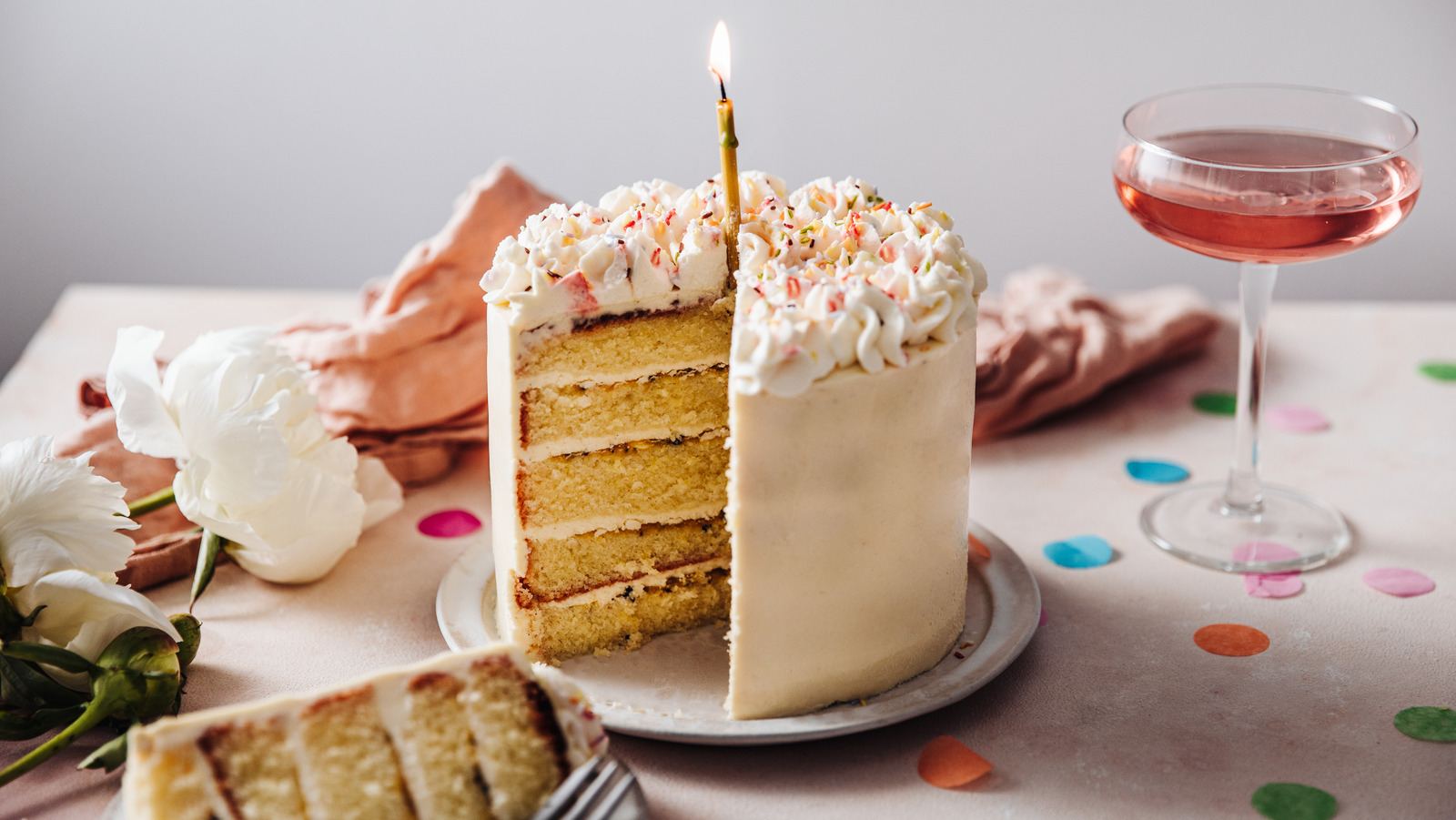Coating a homemade cake in a layer of frosting can cover a multitude of baking sins. Indeed, there’s little that a generous dollop of Italian meringue buttercream, chocolate ganache, or cream cheese icing can’t fix. From sticking the crumbly, broken slabs of a chocolate layer cake together to leveling the domed top of a particularly well-risen pound cake, a thick slathering of frosting is a cosmetic lifesaver. However, if you’ve been struggling with coating your cake with a flawlessly smooth layer of buttercream using only a palette knife and a prayer, we’ve got a hack to guarantee that your next gateau gets the show-stopping makeover it deserves. If you’re a novice baker and don’t have a fancy turntable in your cupboard, you can enlist the help of your microwave; specifically, the glass plate inside your appliance and the wheeled ring it sits on.
When combined, these two bits of equipment create a makeshift turntable that you can twist to help you evenly coat a cake in a delectable layer of lusciously creamy frosting like a pro. While you can use an offset spatula to smooth the top and sides of a round cake, it takes a lot of maneuvering, bending down, and extra effort to achieve a seamless finish. This isn’t much of a problem if you’re assembling a rustic-style birthday cake for a three-year-old that doesn’t need to look picture-perfect, but it can be an issue if you’re after a professional finish.
An even crumb coat is key to an immaculate cake

Frosting your cake evenly with a primary thin layer of icing is vital to trapping in crumbs that can look unsightly on a finished product. Known as a crumb coat, this technique locks in any loose fragments of cake to create a smooth, buildable foundation for the final layer of buttercream to be applied to the surface of your sponge. This even stratum of frosting is far easier to achieve if you place your cake on your microwave plate and turn it while standing in one fixed spot instead of moving around. You can use your palette knife or a cake scraper to smooth the sides of the cake while turning the plate with your free hand. You can also rotate the plate as you pipe on frosting rosettes, swirls, and decorative shell borders in a single streamlined motion. What’s more, a turntable makes it easier to create a swirled top on a cake that’s coated in a muscovado chocolate ganache or classic vanilla buttercream, or any other of the many types of frosting for that matter. Simply press your palette knife in the center of your sponge to create an indentation and move it out towards the edge of the cake as you gently turn the microwave plate on the wheeled ring.







